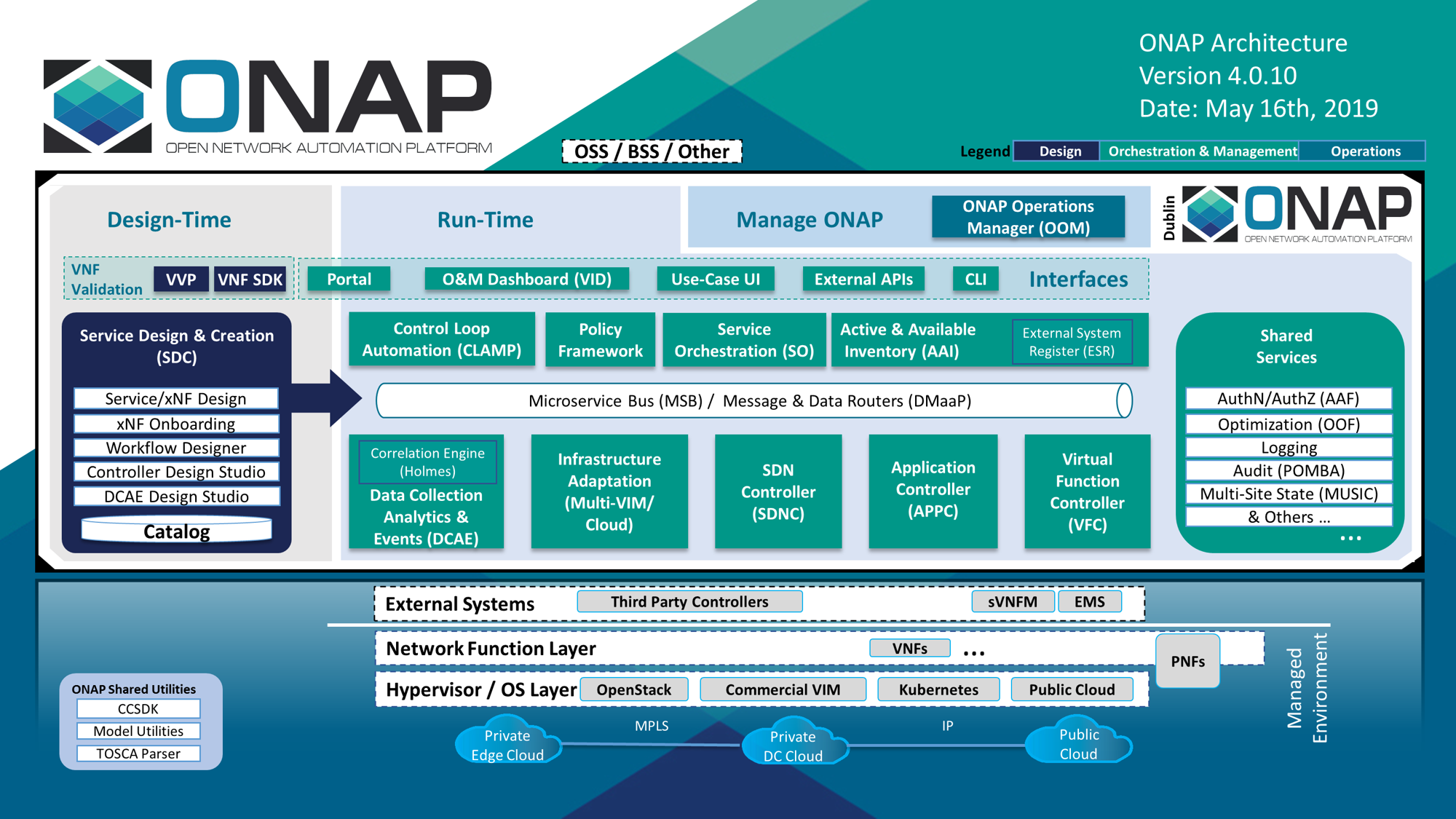...
Other FD.io Projects?
3.2 ONAP
Editor: Chaker Al-HakiHakim
Introduction to ONAP
The Open Network Automation Platform (ONAP) project addresses the rising need for a common automation platform for telecommunication, cable, and cloud service providers—and their solution providers— that enables the automation of different lifecycle processes, to deliver differentiated network services on demand, profitably and competitively, while leveraging existing investments.
Prior to ONAP, telecommunication network operators had to keep up with the scale and cost of manual changes required to implement new service offerings, from installing new data center equipment to, in some cases, upgrading customer equipment on-premises. Many operators are seeking to exploit Software Defined Network (SDN) and Network Function Virtualization (NFV) to improve service velocity, simplify equipment interoperability and integration, and reduce overall CapEx and OpEx costs. In addition, the current, highly fragmented management landscape makes it difficult to monitor and guarantee service-level agreements (SLAs).
ONAP is addressing these challenges by developing global and massive scale (multi-site and multi-Virtual Infrastructure Manager (VIM)) automation capabilities for both physical and virtual network elements. It facilitates service agility by supporting data models for rapid service and resource deployment, by providing a common set of Northbound REST APIs that are open and interoperable, and by supporting model driven interfaces to the networks. ONAP’s modular and layered nature improves interoperability and simplifies integration, allowing it to support multiple VNF environments by integrating with multiple VIMs, virtualized network function managers (VNFMs), SDN Controllers, and even legacy equipment. ONAP’s consolidated VNF requirements enable commercial development of ONAP-compliant VNFs. This approach allows network and cloud operators to optimize their physical and virtual infrastructure for cost and performance; at the same time, ONAP’s use of standard models reduces integration and deployment costs of heterogeneous equipment, while minimizing management fragmentation
...
.
Scope of ONAP
ONAP enables end user organizations and their network or cloud providers to collaboratively instantiate network elements and services in a dynamic, closed control loop process, with real-time response to actionable events.
ONAP’s major activities, that is designing, deploying and operating services, are provided based on ONAP’s two major frameworks, namely on Design-time framework and Run-time framework:
Figure 1
...
